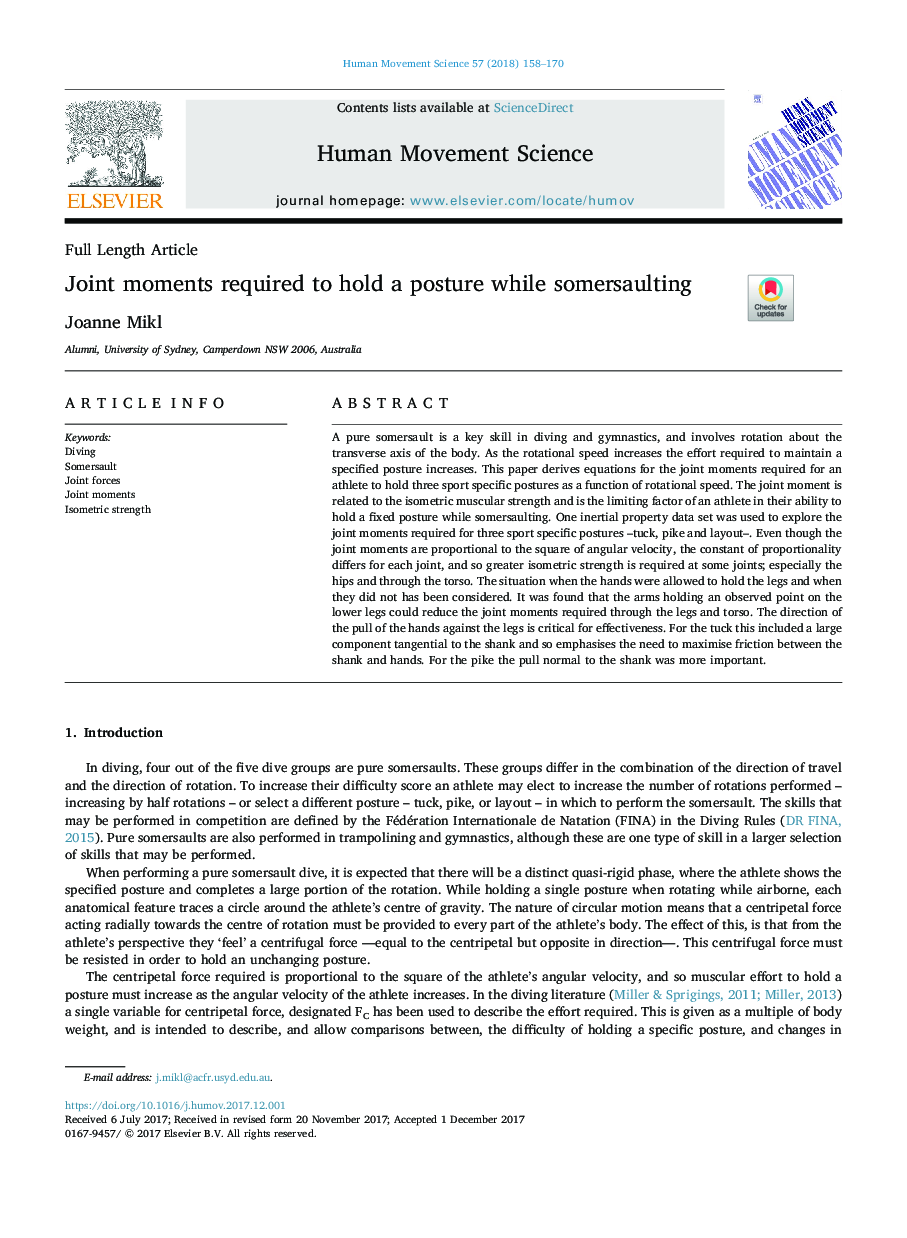| Article ID | Journal | Published Year | Pages | File Type |
|---|---|---|---|---|
| 7290958 | Human Movement Science | 2018 | 13 Pages |
Abstract
A pure somersault is a key skill in diving and gymnastics, and involves rotation about the transverse axis of the body. As the rotational speed increases the effort required to maintain a specified posture increases. This paper derives equations for the joint moments required for an athlete to hold three sport specific postures as a function of rotational speed. The joint moment is related to the isometric muscular strength and is the limiting factor of an athlete in their ability to hold a fixed posture while somersaulting. One inertial property data set was used to explore the joint moments required for three sport specific postures -tuck, pike and layout-. Even though the joint moments are proportional to the square of angular velocity, the constant of proportionality differs for each joint, and so greater isometric strength is required at some joints; especially the hips and through the torso. The situation when the hands were allowed to hold the legs and when they did not has been considered. It was found that the arms holding an observed point on the lower legs could reduce the joint moments required through the legs and torso. The direction of the pull of the hands against the legs is critical for effectiveness. For the tuck this included a large component tangential to the shank and so emphasises the need to maximise friction between the shank and hands. For the pike the pull normal to the shank was more important.
Related Topics
Life Sciences
Neuroscience
Cognitive Neuroscience
Authors
Joanne Mikl,
